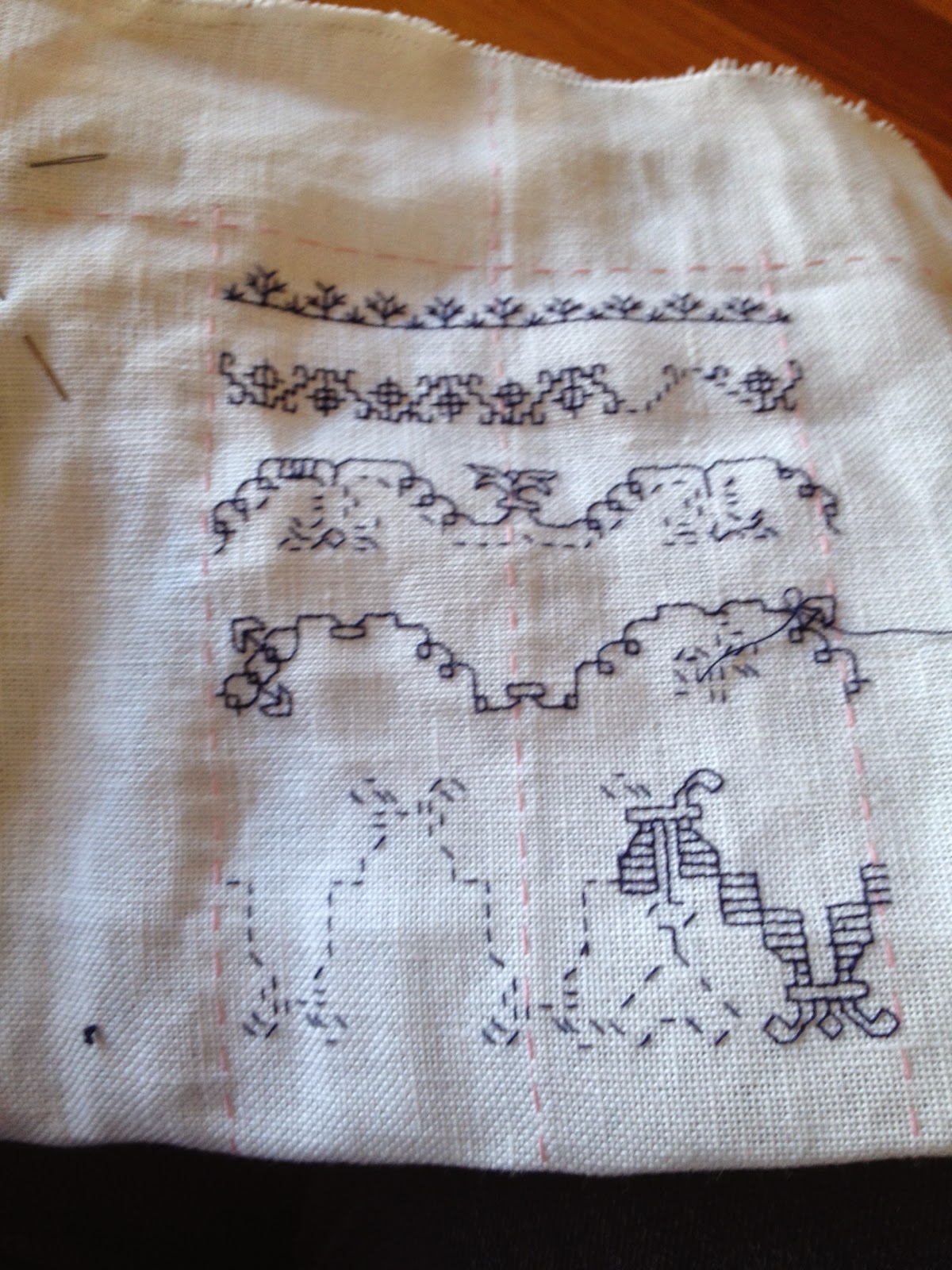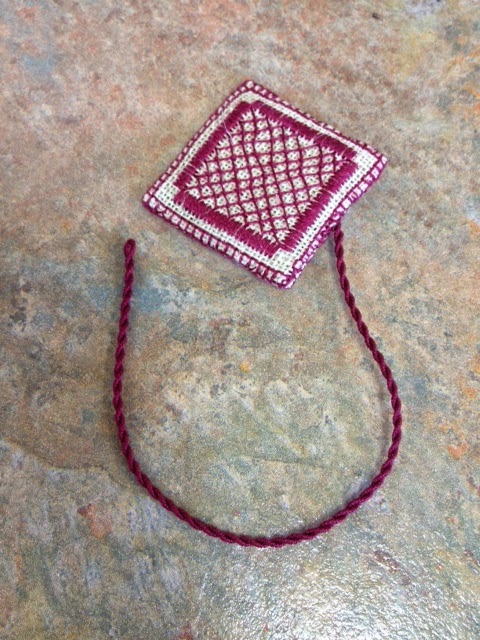 The challenge in smocking a dress for Niamh this Christmas was to come up with both a pattern and a fabric that was summery, different to Veronica's but equally desirable. I chose a batiked cotton I bought in Indonesia several years ago in mauves and gold - figured it would go with her complexion in the same way as the black in Veronica's dress worked with hers.
The challenge in smocking a dress for Niamh this Christmas was to come up with both a pattern and a fabric that was summery, different to Veronica's but equally desirable. I chose a batiked cotton I bought in Indonesia several years ago in mauves and gold - figured it would go with her complexion in the same way as the black in Veronica's dress worked with hers.The pattern was a bit harder to find, but I settled on a sundress called Summer Dreams, from AS&E 61. . While this has not the drama of the ribbon ties on Veronica's dress, it had some potential for spectacular buttons.
 The smocking was straightforward but lengthy as it goes all the way around the skirt. You join the back and front skirts, then pleat and smock the whole piece.
The smocking was straightforward but lengthy as it goes all the way around the skirt. You join the back and front skirts, then pleat and smock the whole piece. Once the smocking is completed, the construction was fairly straightforward. I added some piping in mauve. I also settled for Velcro, rather than button closure. Since it fastens at the back, I figured a 7 year-old was better off without buttons.
Once the smocking is completed, the construction was fairly straightforward. I added some piping in mauve. I also settled for Velcro, rather than button closure. Since it fastens at the back, I figured a 7 year-old was better off without buttons.The result is pleasing. While the dress is not dramatic as is Veronica's, Niamh looks fabulous in it. And likes it, which counts most.










1.JPG)





































